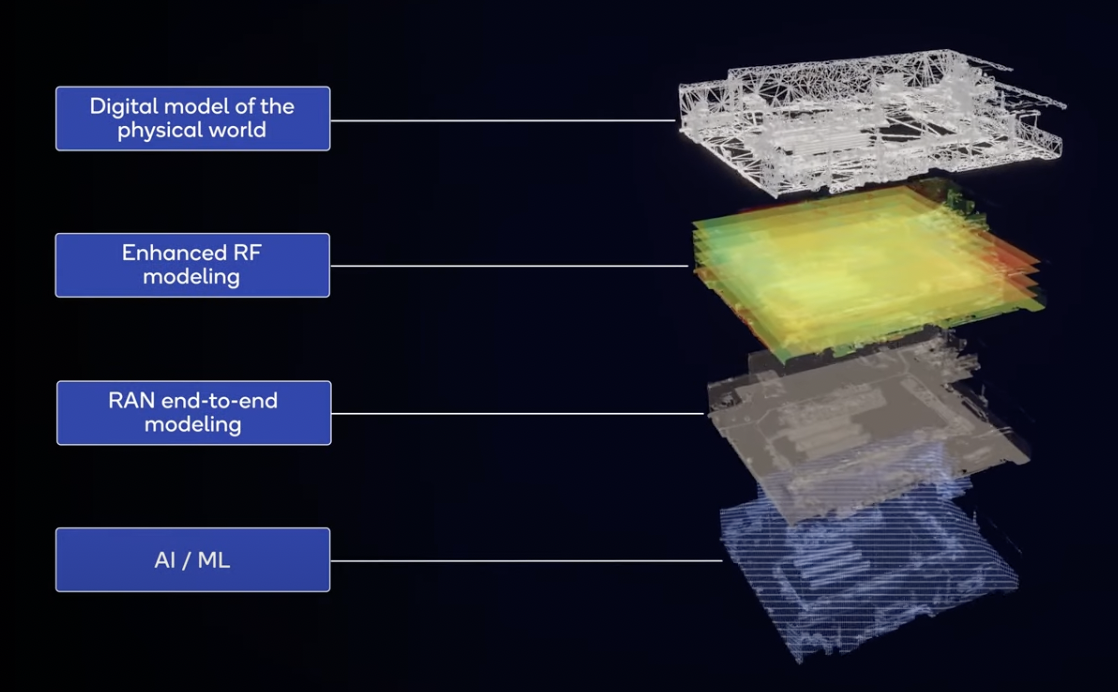In the transition to 5G-Advanced and 6G, dynamic digital twin networks can help operators manage increasing network and service complexity
While digital twins are not a new concept, harnessing real-time network data and putting it into a user-friendly interface to facilitate dynamic management and adaptation to network changes could prove a boon to operators. Given the increase in network and service complexity coming with the evolution from 5G to 5G-Advanced and eventually to 6G, digital twin networks could help operators simplify everything from coverage and capacity planning to actual operation of the network.
Qualcomm Senior Director of Technology Xiaoxia Zhang explained that “the overall concept is to reduce network cost, and also make it easier to deploy and also manage.” With a digital twin network—or a digital twin of a manufacturing system, city, etc…—the idea is to stand up a digital version of a physical network or process. “With this you can do lots of analytics of the network operation,” she said.
She gave the example of an operator contemplating deployment of an additional base station on the infrastructure side, or on the service side, instantiating another network slice. With a digital twin network, operators can understand if the “network is able to sustain the additional requirement.” Experimentation using a digital twin network, rather than in the physical world, can help avoid impacts to users. “Sometimes the operation may not be recommended for a given situation,” Zhang said, “but you can manipulate that in the digital world first. And then, you only recommend the operation when it’s up to your requirement.”
At its San Diego, California headquarters, Qualcomm has built an Open RAN-compliant, 5G radio access network (RAN) that uses a RAN Intelligent Controller (RIC) and the Qualcomm Edgewise Suite for RAN automation. The company has also built a digital twin network to mirror this set-up in a virtual environment to prove out its ability to help operators answer “what if” questions like how many users can a network node support while maintaining certain quality of service parameters. In the context of AI-based automation, a digital twin network can help develop operational strategies and better understand real-world contexts that would (or wouldn’t) benefit from AI capabilities.
In the move to 5G-Advanced and eventually to 6G, Zhang anticipated that more use cases, more service-level requirements, more frequency bands and more overall system and service complexity will make the case for digital twin networks. “All of this is going to create more and more challenges or considerations,” she said. “With this digital twin, you can manipulate the things in a digital domain, and then, for example, you can see, ‘OK, if I want to do spectrum sharing with 5G, once I have 6G,’ then you can see how much resources you can allocate…so that you do not hurt 5G user experience while you’re satisfying the 6G user experience.”
For more on Qualcomm’s advanced wireless R&D, read the following:
- Qualcomm SVP talks wireless R&D philosophy, priorities
- Giga-MIMO is the foundation for wide-area 6G
- Enabling boundless XR with dynamic distributed compute
- Enhancing vehicular safety and experience with cloud/connectivity
- Access to more spectrum means more economic and national security
- Qualcomm focused on making 5G mmWave more cost effective

